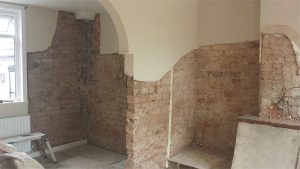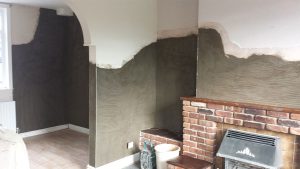J is for Jamie Watkins
In this instalment of A-Z of Atlantis Damp Proofing & Timber Specialists Ltd, J is for Jamie Watkins.
Who is Jamie Watkins?
Hello everyone! My name is Jamie Watkins and I am owner and Managing Director of Atlantis Damp Proofing & Timber Specialists Ltd. I thought I’d take the opportunity to tell you more about myself and the passion I have for providing excellence in all the services I provide throughout Cheshire.
I began my construction career working part-time in the building yard at Robert Gleaves and Sons in Frodsham. On leaving school, I started full time. I absolutely loved this job! Interacting with all the trades. Gaining a solid basic knowledge of customer service, pricing and material quantities.
Then, in my early 20’s I joined my dad and brother in their plastering business. I followed in the family footsteps to become a third generation plasterer. I perfected all the skills I needed to become a general plasterer and continued to grow my knowledge of building sites and activities. A lot of my dad’s work came from a Damp Proofing firm. My interest grew and I could see an opportunity to develop my own business in this area.
In 2009 I took the leap to set up on my own. I also completed my C.S.R.T. Qualifications through the Property Care Association (PCA). It was an exciting (if not a bit stressful!) time for me. I was on the tools, training up my own crew and working evenings and weekends to complete all the paperwork, but I loved it! I’ve always been a ‘people person’ and enjoyed giving honest, reliable expert to provide the solution that people needed.
I knew there was no need to ever try to pull the wool over the eyes of others and pretend solutions were needed when they weren’t. To this day, I operate on this philosophy. So do my team. I am genuinely saddened when I hear of the poor experiences my clients have had with previous ‘Damp Proofing’ companies and I believe all of our 5 star reviews reflect that we are just not like them.
My company continued to grow and became Ltd in 2013, then VAT registered in 2014.
In 2017 I also became a qualified member of the Wall Tie Installers Federation (WTIF). Their rigorous training progamme was an eye opener. It gave me the confidence to more actively pursue this business area
In 2016, my wife, Freya, officially joined the business and started to survey with me. She also began her own C.S.R.T. Qualification which is now 2/3rd’s complete. Freya, shares my philosophy and is entirely committed to the vision that I began and we are sure we will fulfil our ambition of owning a strong family business that the next generation of Watkins’s can enjoy. My goal is not to compete with the big boys, I wish to remain a local, family run business with a passion for doing the right thing and continuing to enjoy happy customers.
Myself and Freya remain committed to providing Northwich, Warrington, Chester, Crewe, Altrincham and surrounding areas with expert, pragmatic, professional advice on Damp, Timber and Wall Tie fault diagnosis and recommendation. If you think we can help you, call us now on 0800 098 8277.
The post J is for Jamie Watkins appeared first on www.AtlantisDamp.co.uk.
source http://www.atlantisdamp.co.uk/blog/j-jamie-watkins/

